Nest boxes- Pride and Prejudice Revisited
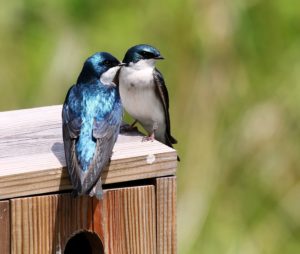
Tree Swallows by David Byron Keener
The advantages of nest boxes are strong and indisputable. However, stacked against the wider ecological benefits of a dead tree, a nest box is a sad substitute indeed. If in doubt, please open the tab on our website titled, The Value of Dead Trees.
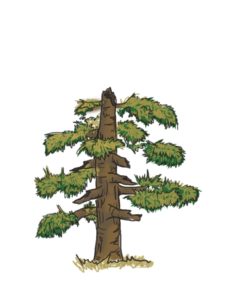
Shorten and partly de-limb an unwanted tree or a dead one. Make jagged cuts.
Nest boxes by their very nature, and usually by necessity, are not an equal opportunity conservation action. If you pardon the twist on an old movie title, they are a reason for pride and prejudice. Pride is most certainly justifiable, particularly because in a few instances boxes have helped to re-build declining species, or allowed some to survive in altered habitats. And prejudice is possible because boxes allow us to support the species we favor, or are in most need of help.
However, when favoritism of a species results in wide-spread installment of artificial cavities, while also ignoring the systemic removal of dead trees and habitat degradation, the needs of other cavity nesters for which boxes are neither practical or wise are overlooked. Furthermore, if box numbers are excessive and installed blindly, sustainability and habitat diversity may be compromised.
Looking back we can see that Mother Nature already had the best plan for cavity nesting birds and forest health. Dead trees, aided by the excavations of woodpeckers and the help of decomposers, added to both sustainability and diversity. Until that is, human development revealed its toll and ultimately, genuine concern, combined with a desire to make a tangible difference, led us to this appealing, ever-expanding intervention. Artificial mud nests for Cliff Swallows is another example.
It’s easy to resign ourselves to habitat loss particularly when inexpensive, feel-good remedies are available. However it’s always important to renew discussion about prevention and preservation vs resignation and remediation.
These illustrations offer some ways to help. They are authorized by the Washington Department of Fish and Wildlife.
- Add cover to a hollow stump
- Drill holes in a dead tree to hasten internal decay
-
Excavate a small cavity in a
large, dead trunk. Provide cover and
an entrance.


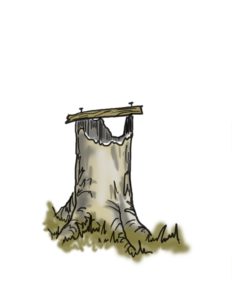
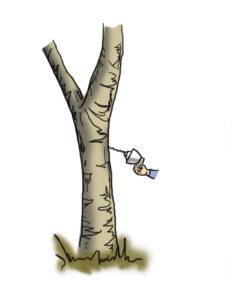
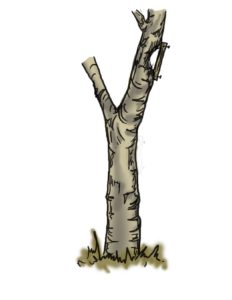

Connect
Connect with us on the following social media platforms.